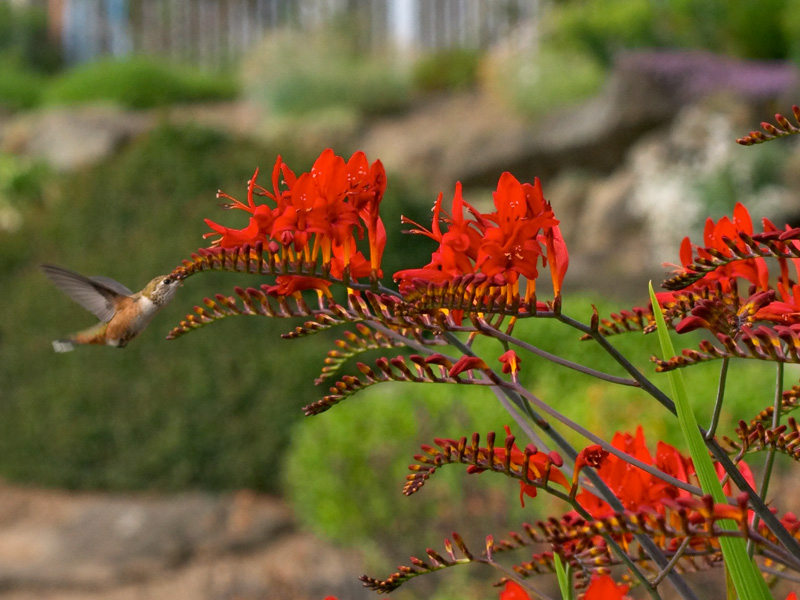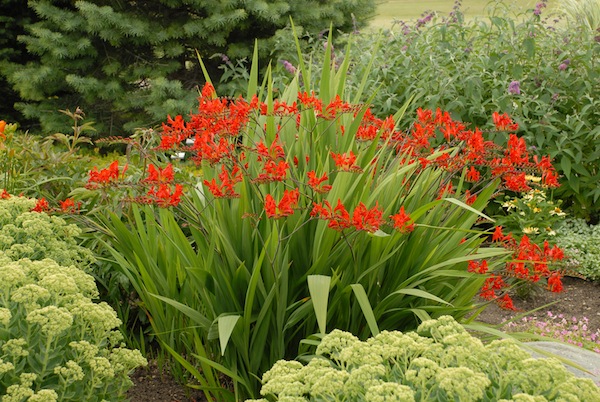Crocosmia: The Sword Lily
By: Lauren M. Liff for Dabah Landscape Designs
The Crocosmia got its name from the Greek words krokos meaning “saffron” and osme meaning “odor”. Saffron is a spice typically derived from the Crocus when immersed in hot water. The Crocosmia gives off a fragrance that resembles that of saffron, so the name makes perfect sense. There are many varieties of Crocosmia out there but my personal favorite is known as ‘Lucifer’ (featured in the images accompanying this article). With its bright red flowers, its no wonder how this plant got its name!
A Member of the Iris family, the Crocosmia is Originally from South Africa however has proven to be hardy for zones 5 to 9. This phenomenal specimen forms sword shaped foliage surrounding tall stems adorned with amazingly bright blooms. Other varieties of Crocosmia (also known as Montbretia) come in a wide range of reds, oranges and yellows. The beautiful funnel shaped blooms also give off a delicate fragrance which is enhanced when the flower is cut and dried.
When it comes to planting Crocosmia in your landscape, keep in mind that it prefers full sun and slightly acidic soil that is well drained. The corms (similar to bulbs) should be planted in the early spring (before April 15th) and should be typically planted 5 to 10 bulbs per square foot - 6 to 8 inches apart for a border or 15 to 20 centimeters when used as a massing plant. Crocosmia will bloom in May or June; newly planted bulbs do sometimes wait till the following season to show flowers (however planting them properly and in the right area will promote more vigorous blooming). When planted as a massing plant, Crocosmia is able to show off its true potential but also works well as a back border in a perennial garden.
Aside from its unique look this interesting plant will bloom all summer long and proves to be drought tolerant once established. Other advantages of this beauty are the fact that it is disease and deer resistant which is exactly what we need in New Jersey! This plant is also a pollinator favorite, by attracting humming birds, butterflies and other pollinators – the Crocosmia helps the environment by combating epidemics such as colony collapse disorder. This exotic looking plant makes a great addition in any landscape and adds a wonderful flare of color throughout the entire summer! For more information take a look at the links listed below.











